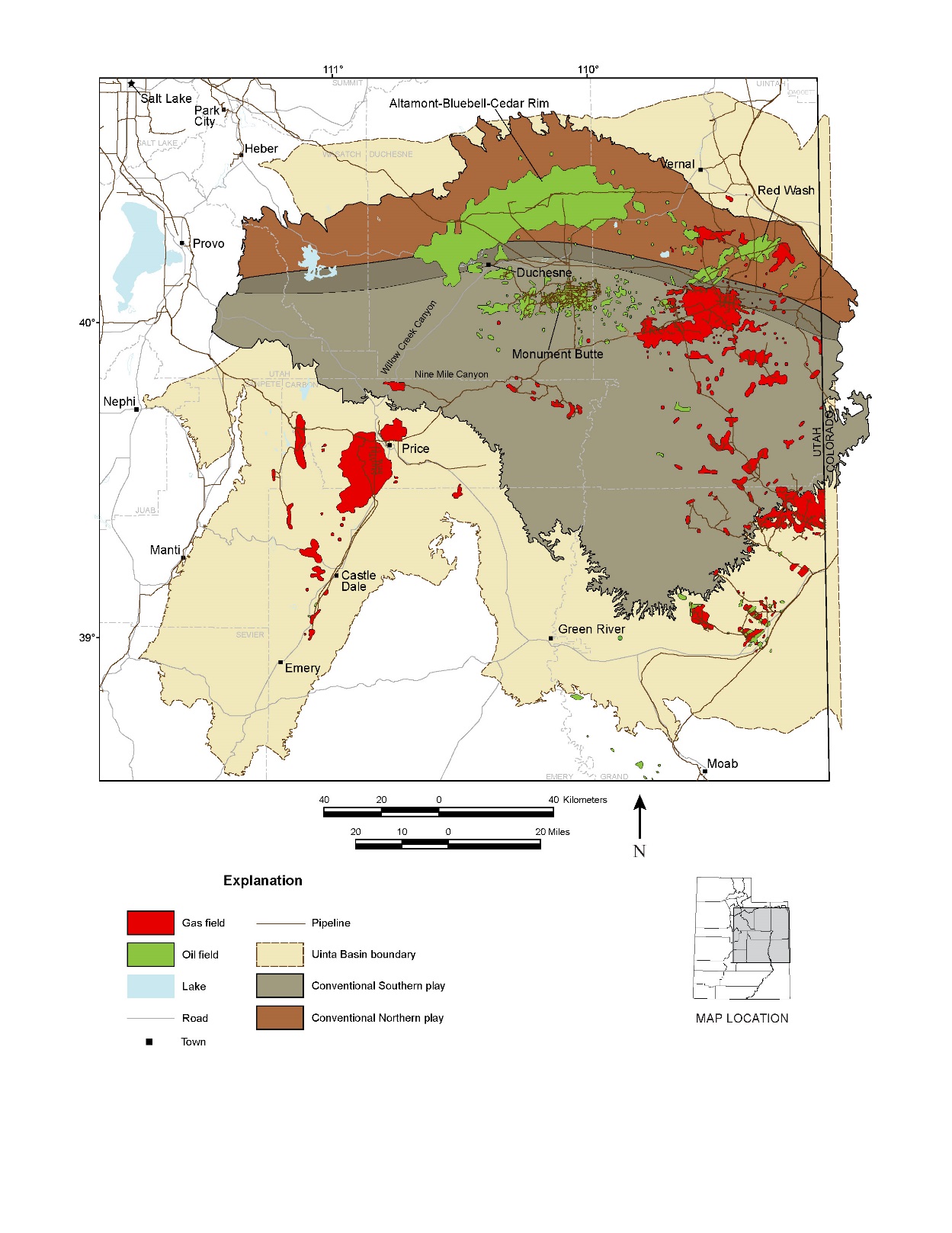
A new study by the Utah Geological Survey (UGS), Major Oil Plays in Utah and Vicinity, contains the critical maps, data and information to help Utah remain a significant petroleum contributor
to the nation while reaping major benefits to the State’s economy for years to come.
The study comes at time of low drilling activity in Utah, and elsewhere, due to current low oil prices. However, oil prices change depending on the economics of global market supply and demand. History has shown that oil prices always rebound and are predicted to rise soon. The UGS study will help petroleum companies, both those already operating in Utah and others considering operations in the state, determine land-acquisition, new exploration, and field-development strategies.
It will also help pipeline companies better plan future facilities and routes. Additionally, landowners, bankers and investors, economists, utility companies, county planners, and numerous government resource management agencies now have the additional data, information, and maps they need to assist with the decisions and evaluations they face.
“One of the benefits of Utah’s diverse geology is a wealth of petroleum resources,” said UGS geologist Tom Chidsey. “Utah’s proven oil reserves have risen significantly to more than 812 million barrels, indicating significant oil remains to be discovered and produced. This study will help increase recoverable oil reserves from existing fields and encourage new discoveries while reducing risk.”
Utah oil fields have produced about 1.6 billion barrels since production began in the late 1940s. Among oil-producing states, Utah ranks eleventh in domestic oil production, having over 150 active oil fields. The 2004 discovery of Covenant oil field in central Utah, a region that had never produced oil or gas, has yielded over 23 million barrels of oil.
Three major oil-producing provinces exist in Utah—the thrust belt, Uinta Basin, and Paradox Basin, in the northern and central, eastern, and southeastern parts of the state, respectively. Utah produces oil from eight major “plays” within these provinces. The UGS study provides “stand alone” play portfolios that describe concisely these major oil plays.
The play portfolios include oil reservoir thickness and rock types; type of oil traps; rock properties; oil and gas chemical and physical characteristics; oil and gas source rocks; exploration and production history; case-study oil fields and exploration potential and trends. Maps of each of the play and sub-play areas are also included.
The study also includes descriptions of Utah’s rock outcrops that are analogs for the producing underground reservoirs. Utah’s incredible exposures of the same rocks that produce from deep in the subsurface provide templates to better understand how to produce oil here and from similar reservoirs throughout the world.
The 293-page Utah Geological Survey Bulletin 137, Major Oil Plays in Utah and Vicinity, is available (PDF) for free download from the UGS website at http://ugspub.nr.utah.gov/publications/bulletins/b-137.pdf. Print-on-demand copies are available for purchase from the Utah Department of Natural Resources Map and Bookstore, 1-888-UTAHMAP, www.mapstore.utah.gov. This research was funded by a grant from the U.S. Department of Energy, National Energy Technology Laboratory under the Preferred Upstream Management Program with additional support from the Utah Geological Survey. The Utah Geological Survey, a division of the Utah Department of Natural Resources, provides timely scientific information about Utah’s geologic environment, resources, and hazards.